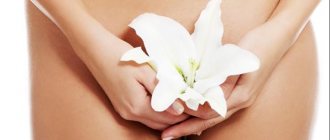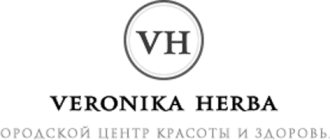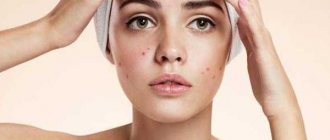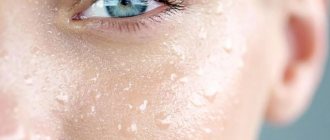We suffer from stress all the time. Whether you're nervous about an upcoming presentation at work or trying to balance work and family, you're constantly under stress.
Stress is bad for your health, but how does your skin react to it? Stress can become chronic and contribute to the development of inflammation. Inflammation, your body's natural response to irritants and injury, is a defense mechanism, but prolonged inflammation can harm the skin.
You may not realize it, but chronic stress and inflammation can wreak havoc on your health. Digestive problems, fatigue and insomnia are all consequences of stress. The skin also reacts to stress and you can pay attention to this.
Read on to learn about the connection between stress and skin inflammation.
How stress can affect your skin
When the immune system becomes aware of cell damage or the presence of a potentially harmful pathogen, it initiates inflammation, which turns on a hormone called cortisol.
In the short term, inflammation helps speed up the healing process by flooding the area with white blood cells and swelling to protect against further damage. Once the stressful incident is over, cortisol levels return to normal and inflammation subsides. If cortisol levels remain elevated after the threat has passed, it causes chronic inflammation, which can lead to problems.
The problem is that the body has a hard time telling the difference between physical and mental stress. Physical stress (caused by injury or infection) causes short-term inflammation that resolves after healing. Emotional stress can cause cortisol levels to rise over the long term, which is detrimental to your health.
What it is
“Stressed skin” is a real scourge of modern man. Its typical symptoms: gray complexion, dryness and dehydration, rashes or red spots (allergic type), acne, extreme sensitivity, possible combination with long-term dermatoses (neurodermatitis or eczema). All this “beauty” is provided to us by corticosteroid hormones, which trigger a cascade of biochemical reactions in the body.
Initially, stress is an adaptive mechanism that gave ancient people the strength to fight or run away when faced with danger (an animal or an enemy). In modern “sterile” conditions of civilization, survival reactions are rarely used, and the mechanism still works like a clock - just like thousands of years ago. So it turns out that a natural reaction is impossible, and the hormonal release turns against the body.
Signs of chronic stress:
- Irritability
- Headaches or migraines
- Fatigue
- Difficulty concentrating
- Sleep problems
- Rapid, disorganized thoughts
- Digestive problems
- Frequent colds or infections
- Fast heart rate
- Pain and stiffness
- Nervousness
Chronic stress and inflammation can increase the risk of many health problems, including depression, heart disease, neurodegenerative diseases and cancer. This can greatly affect your skin. In addition to exacerbating existing skin problems, stress can increase skin sensitivity and worsen problems such as acne and breakouts.
Stress and premature aging
With prolonged stress, digestion, blood circulation, and hormonal levels are disrupted, uncontrolled narrowing or dilatation of blood vessels, and surges in blood pressure occur. Excessive nervous stress affects the functioning of the endocrine system. All these factors affect our health.
Stress is accompanied by a constant increase in the level of adrenaline, which, through signaling into cells, affects the bone marrow, causing inflammation and aging of stem cells.
Stress hormones (adrenaline, cortisol, norepinephrine) suppress many of the body's defense mechanisms and can provoke premature aging of the body.
How stress affects your skin
When you're stressed, even the simplest tasks can seem difficult. Chronic stress can cause you to skip your daily skin care routine. Stress can cause physiological changes in the skin and worsen existing skin problems.
In addition to increasing cortisol levels, stress causes a surge of adrenaline, which results in increased activity of the sweat glands. The more you sweat, the more dehydrated your skin becomes, leaving it looking dull and dry. Excess stress hormones also change the balance of your skin, causing it to produce too much sebum, leading to acne. Chronic inflammation associated with stress also leads to eczema and psoriasis.
Stress affects not only the appearance of the skin, but also the rate at which it ages. Stress triggers a reaction in the brain, causing it to produce more cortisol. This hormone is known to break down collagen in the skin, leading to wrinkles. Chronic stress makes wrinkles more visible, leaving your skin dull, dry and tired.
Making changes to your diet and lifestyle can help you combat internal and external signs of stress. Read on to learn some simple steps to help you cope with stress.
The influence of psychological stress on skin condition (Lin TK et al.)
The term “stress” has many different interpretations and is most often associated with emotional and mental overstrain. However, the concept of stress is much broader. It was first used by the Canadian physiologist Hans Selye in 1936 in his work on the general adaptation syndrome, where he called the body’s universal adaptive response to strong influences from external and/or internal factors stress. Currently, the term stress denotes a set of nonspecific adaptive reactions of the body to the influence of various unfavorable factors (both psychological and physical nature), which disrupt its homeostasis and also change the functioning of the body as a whole. In simple words, stress is a state in which the brain perceives information about influencing factors as threatening normal functioning, and responds to it in a generalized manner.
How exactly? Stress responses are based on evolutionary survival strategies known as “fight or flight”, which is controlled by the sympathetic division of the autonomic nervous system. In response to stress factors, the hypothalamic-pituitary-adrenal axis (HPA) is activated. In particular, activation of releasing factors in the hypothalamus stimulates the secretion of ACTH, α-MSH, TSH and STH in the anterior lobe of the pituitary gland, and the resulting ACTH, in turn, stimulates the release of glucocorticosteroids (mainly cortisol), through which the main effects of stress are realized. This system is called the central axis of the HPA axis.
Typically, cortisol levels undergo diurnal fluctuations that are regulated by the internal circadian system, with peak levels in the early morning and lowest concentrations around midnight. Stress can significantly increase cortisol levels and alter this curve. Thus, in mice under stress, there was daily dysregulation of HPA axis activation, leading to a 4-fold increase in the level of corticosterone (an analogue of cortisol in mice) in plasma.
Another pathway of stress response is the release of catecholamines by the adrenal glands. The effects of all these mediators are aimed at resisting external influences through the mobilization of the body’s reserves - obtaining energy through the formation of glucose from glycogen and the breakdown of lipids (to have enough strength to “escape or fight back”), strengthening the work of the cardiovascular system (to deliver this energy to the muscles), suppression of immune and inflammatory reactions (so as not to “succumb” to inflammation in case of injury during a “battle”), as well as stimulation of the central nervous system (to be on alert during a “battle”).
However, all these reactions are a good strategy during short-term stress, when the body transfers its resources to preserve life, sacrificing other functions. And for some time there is a so-called “resistance phase”, when the body adapts to stress and its resistance increases. If the duration of stress is relatively short, then after its end the body’s functions normalize. But in the modern world we are not talking about short-term stress, lasting minutes or hours, but about chronic stress, when experiences are observed several hours a day for weeks and months. And if the strength of these experiences is significant, the so-called “exhaustion phase” begins, the third stage of stress according to Selye’s classification, which is associated with the aggravation or development of diseases. So, if in a state of adaptation, cortisol promotes tissue healing, reduces inflammation and allergic reactions, but chronic excess of its normal level will cause the opposite effect, and is associated with cardiovascular diseases, diabetes, obesity, osteoporosis, increased risk of infectious, autoimmune and many other diseases , as well as accelerating the aging process.
Thus, dosed stress can be a good option if we need to increase the body’s resistance or launch some reparative processes, which, for example, is used in negative stimulation procedures (peelings, high-intensity hardware), but chronic stress is definitely a negative phenomenon for the body as a whole and each of its components separately.
What happens to the skin under stress
The skin is influenced by processes occurring not only in the central axis of the HPA system; the skin itself directly reacts to stress. In response to stress factors, epidermal keratinocytes and hair follicle keratinocytes, melanocytes, sebocytes and mast cells themselves produce corticotropin-releasing hormone. Also, skin cells, including fibroblasts, are capable of producing ACTH and corticosterone. A separate role is also played by the release of neuropeptides (substance P) and neutrophins by free nerve endings and skin cells, which are involved in the development of neurogenic inflammation. This system is called the peripheral axis of the HPA system. Details are in the table.
Main stress mediators in the skin (Chen Y. et al.)
| Stress mediator | Source | Effector cell | Functions in the skin |
| Corticotropin releasing hormone (CRH) | Hypothalamus; Keratinocytes, sebocytes and mast cells of the skin | The CRH receptor CRH-R1 is expressed in the epidermis, dermis and subcutaneous layer; CRH-R2 is expressed in hair follicle keratinocytes and fibroblasts | Stimulation of the production of ACTH and cortisol in the skin; Proliferation, differentiation, apoptosis, inflammation and angiogenesis. |
| Adrenocorticotropic hormone (ACTH) | Pituitary; Skin melanocytes, keratinocytes of the epidermis and hair follicles, Langerhans cells, monocytes, macrophages, dermal fibroblasts | ACTH receptors MC2-R are expressed in skin melanocytes, hair follicle cells, epidermal keratinocytes, sebaceous and eccrine glands, as well as in dermal fibroblasts, muscles and blood vessels of the dermis. | Stimulation of the production of cortisol and cortocosterone; Melanogenesis, cytokine production, cell proliferation, formation of melanocyte dendrites, hair growth, regulation of immunity and inflammation. |
| Cortisol | Adrenal cortex; Hair follicle cells, melanocytes and fibroblasts | The glucocorticoid receptor (GR) is expressed ubiquitously in all skin cells | Main effect on the immune and inflammatory system; Cell proliferation and survival through the PI3K/Akt pathway; Proliferation and differentiation of the hair follicle; formation of the epidermal barrier. |
| Neurotrophins | Central nervous system; Skin sympathetic nervous system neurons, mast cells, T cells and B cells, keratinocytes, fibroblasts and melanocytes | Two receptors TrK and p75 are expressed in mast cells, immune cells, keratinocytes, fibroblasts and melanocytes | Promotes innervation of the skin; Promote the survival and differentiation of mast cells and modify the expression of inflammatory cytokines; Promote the proliferation of keratinocytes; Important for the migration, vital activity and differentiation of melanocytes, as well as their protection from oxidative stress and apoptosis; Promote fibroblast differentiation and migration and possibly MMP reduction and secretion. |
| Substance P | Sensory nerve fibers | Mast cells, macrophages, T cells | Cytokine release induces inflammation, mast cell activation and lymphocyte proliferation. Increases vascular permeability. |
| Prolactin | Pituitary; Hair follicle cells and epidermal keratinocytes, fibroblasts, adipocytes, sweat glands and sebaceous glands | Prolactin receptor (PRLR) is expressed ubiquitously except in fibroblasts | Autocrine modulator of hair growth by stimulating catagen (hair regression); Stimulates the growth of keratinocytes and the production of keratin in keratinocytes, as well as the production of sebum in the sebaceous glands. Immunomodulatory agent. |
| Catecholamines (adrenaline and norepinephrine) | Adrenal medulla; Skin nerve fibers, keratinocytes | Adrenergic receptors are expressed by natural killer cells, monocytes and T cells, keratinocytes and melanocytes | Regulate proliferation, differentiation and migration of keratinocytes; Promote melanogenesis in melanocytes; Reduce fibroblast migration and collagen secretion; Disrupt wound healing processes; Suppress IL-12 in dendritic cells, leading to inhibition of Th1 and increased differentiation of Th2; Important for lymphocyte turnover, circulation, proliferation and cytokine production. |
Central and peripheral skin response to stress (Chen Y. et al.)
Together with agents synthesized by the central HPA axis, substances formed directly in the skin cause a decrease in its barrier and immune function, activation of inflammatory processes, imbalance of free radicals, stimulation of sebum production and melanogenesis, disruption of proliferation and differentiation of the epidermis, slowdown of DNA repair and healing damage. All this leads to increased dryness and sensitivity of the skin, accelerated aging, exacerbation of dermatological diseases such as acne, psoriasis, rosacea, eczema, atopic dermatitis, vitiligo, alopecia and seborrheic dermatitis.
What does understanding the mechanisms of stress on the skin tell us? In addition to etiological treatment - reducing stress and working with specific pathological conditions, basic support is very important; we can provide the skin with the necessary care that will help neutralize these unpleasant reactions. First of all, this is the restoration of the lipid barrier with the help of physiological lipids, the use of moisturizing agents, antioxidants and anti-inflammatory ingredients, including those that affect the skin receptor apparatus and help in the fight against neurogenic inflammation, microbiome-friendly agents. To learn more about specific ingredients and protocols, read our book “NEW COSMETOLOGY. Cosmetical tools".
Sources:
Smith SM, Vale W W. The role of the hypothalamic-pituitary-adrenal axis in neuroendocrine responses to stress. Dialogues Clin Neurosci 2006; 8 (4): 383–395.
Arun CP Fight or flight, forbearance and fortitude: the spectrum of actions of the catecholamines and their cousins. Ann NY Acad Sci 2004; 1018:137–140.
Chen Y., Lyga J. Brain-skin connection: stress, inflammation and skin aging. Inflamm Allergy Drug Targets. 2014; 13(3): 177–190.
Lin TK, Zhong L, Santiago JL Association between Stress and the HPA Axis in the Atopic Dermatitis. Int J Mol Sci 2017; 18(10).
Here are some tips to deal with stress
Chronic stress and the inflammation it causes are intertwined—you can't deal with one without dealing with the other. If you're constantly stressed, your body will go into self-defense mode, which will increase inflammation. The more inflammation you have, the more stress your body will be under. So what can you do to protect yourself from stress and the inflammation associated with it?
Some simple tips to reduce stress:
- Sleep at least 7-8 hours a day.
- Exercise regularly (ideally 5 days a week), even if it's just a 15-minute walk twice a day.
- Try different relaxation techniques, such as meditation or yoga.
- Delegate authority to lighten the workload.
- Set aside 30 minutes a day for relaxing activities that you enjoy, such as a favorite hobby or spending time with friends.
- Change your attitude and try to see the positive side of things instead of always focusing on and worrying about the negatives.
- Reduce your coffee intake – try not to drink coffee after 2 or 3 pm because it can negatively impact your sleep.
When you reduce your stress levels, you fight inflammation.
To experience the benefits of stress reduction techniques, try the following tips to combat inflammation:
- Fill your diet with anti-inflammatory foods such as fresh fruits and vegetables and fish (rich in omega-3 fatty acids).
- Reduce your intake of foods that promote inflammation, such as red meat, fats, sugar and fried foods.
- Switch from simple carbohydrates (like white bread and refined sugar) to complex carbohydrates (like whole grains and natural sweeteners).
- Consider quitting alcohol or try to reduce your consumption.
Taking steps to reduce your stress levels is good for your body and your skin. Using the right products in your skincare routine will help your skin recover faster and help protect your skin from the harmful effects of stress and inflammation in the future.
What to do in this case
You can, of course, remove the external factor - try to escape from civilization to a Tibetan monastery, where they only meditate and learn Zen. But wait, for a city dweller this will be even more stressful! Therefore, it is within our power to try to establish psycho-emotional comfort in familiar conditions. And this:
1. Practices for relaxation (various breathing systems, yoga, floating).
2. Massage (it has been scientifically established that we are by nature tactile cats - touch, in principle, reduces the stress reaction, and if it is the right touch from a specialist, the effect increases significantly).
3. Aromatherapy using lavender, mint and other oils (remember that it can only be used in the absence of allergies or hypersensitivity to essential oils).
4. Contact with nature: long walks, travel. If your rhythm of life makes it impossible to get out somewhere for a long time, even 15 minutes in the park under a tree during your lunch break will bring relief.
5. Moderate physical activity in the mode and quality in which it brings pleasure. This is the key point: training through self-abuse only increases stress.
6. Helping those who are now in a more difficult situation: animals, kids in an orphanage, a single mother with a bunch of children, a neighbor’s grandmother... In this way we trigger the production of dopamine in the brain - the hormone of satisfaction, which tells us from the inside that we are good. This is the opposite mechanism to the action of stress hormones.
7. Consultations with a psychologist or psychotherapist. There are, after all, specially trained people who will help and teach you how to cope with stress and its consequences.
Well, or try it yourself according to our instructions: When everything is boring: 5 instant ways to calm down
Prevent stress with Yon-Ka Paris products
Proper skin care is the key to healthy skin. Hydrated skin is better equipped to fight the ravages of stress and inflammation, so take the time to incorporate products specific to your skin type into your skin care routine. Not sure which products are best to help restore balance to your skin? Yon-Ka Paris' recommendations .
Preparations from Yon-Ka Paris to combat signs of stress and inflammation on the skin:
- Provence Bath Essence Phyto-Bain is a bath oil with a high concentration of plant extracts and essential oils that relaxes the body and mind. The essence formula, created from high-quality natural ingredients such as horse chestnut extract, cypress and rosemary, promotes increased blood circulation and strengthens the body. Simply add one tablespoon to a warm bath to enjoy the soothing and therapeutic benefits.
- Elixir Vital Serum - a corrective elixir that revitalizes and remineralizes the skin, reducing the appearance of wrinkles. The concentrate contains intensely hydrating ingredients and a restructuring blend of beech bud and soy peptides to help heal skin damaged by stress, fatigue, hormonal changes and inflammation. Use morning and evening after cleansing.
- Sensitive Masque - Rich in natural plant extracts designed to provide immediate relief to sensitive and inflamed skin. In addition to reducing inflammation, its formula reduces skin reactivity, leaving your skin feeling soothed. Use 1 to 3 times a week for smooth, softened skin and increased elasticity.
- HYDRA+ Hydrating Concentrate – If stress is contributing to your skin becoming dehydrated, try adding a booster to your moisturizer. Its water-based formula, enriched with blackcurrant, raspberry and horse chestnut extracts, helps restore your skin's natural radiance. It is recommended by dermatologists for all skin types and does not clog pores.
Stress affects everyone differently. You may be coping with stress by eating unhealthy foods or skipping your daily workout routine. Every decision has an impact on your skin, but the right Yon-Ka Paris can help you combat signs of stress and inflammation.
What determines the body's resistance to stress?
Although stress is harmful to everyone, stress levels vary from person to person. This depends on several factors:
- "Support Group". A strong connection with family or friends can play an important role in managing stress. A person who can rely on others is less stressed than a lonely person.
- Feeling of control. If you are a confident person and believe that you are in control of your life, you are less likely to become a victim of chronic stress compared to a person who “goes with the flow” and blames circumstances for all his failures.
- Worldview. Your outlook on life can protect you from chronic stress. If you are an optimist and a hopeful person who is ready to take on life's challenges, you can easily prevent the harmful effects of stress on your emotional well-being and on your body.
- Ability to cope with emotions. If you have the ability to recognize, accept, and deal with your emotions well, you are much less likely to become bogged down in chronic stress. At the same time, neglecting emotions is not a way out of stress, as many people think. You must give yourself enough time to deal with your emotions and overcome the harmful effects of stress on your body.










